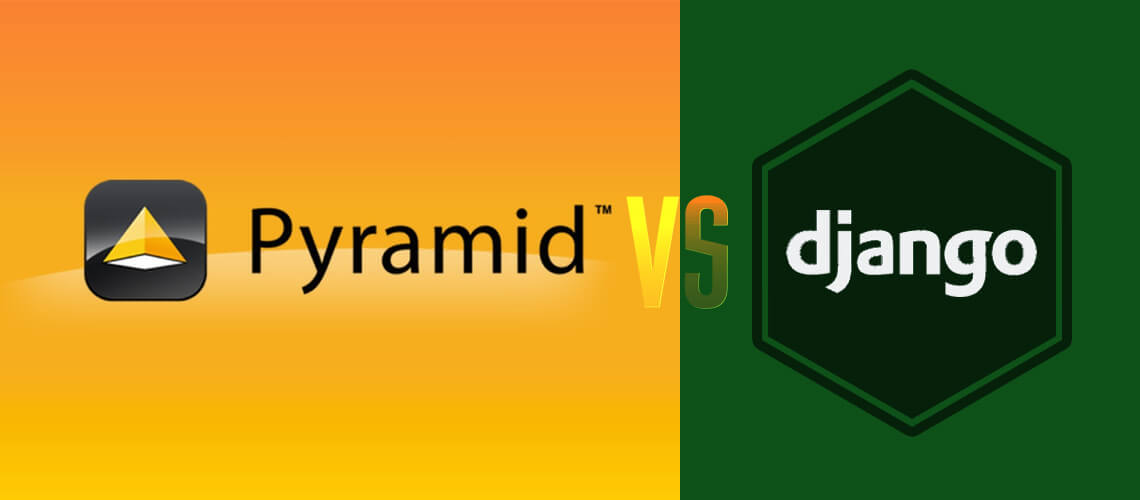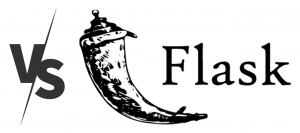

Python is one of the most popular and versatile programming languages in the world. According to a recent survey, about 48% of developers from around the world prefer using Python. It has various applications ranging from web development, machine learning, data analysis, and more. The developers need robust Python web frameworks to build custom web applications rapidly according to varying business requirements. A web developer has option to choose from a wide range of Python web frameworks.
To make the most of this versatile language, it’s important to choose the right framework. At present, there are three popular frameworks for Python– Django, Pyramid, and Flask. Each framework has its own strengths and weaknesses, and commands higher value than the others depending on the nature of the project and use case.
In this article, we will compare Django vs Pyramid vs Flask frameworks. We’ll look at the strengths and weaknesses of each framework so you can decide which one is right for your project.
Comparing Three Widely Used Python Web Frameworks: Pyramid vs Django vs Flask
Django
Django is a high-level web application framework written in Python. It is an open-source framework, with a thriving and active community. The framework emphasizes the “Don’t Repeat Yourself” principle, which helps developers create highly efficient applications. Django also provides an ORM (object-relational mapping) to help manage database operations more easily and securely.
The versatile nature of the framework makes it suitable for projects of any size and capacity. IT firms leverage Django to create dynamic web pages with extensive backend and front-end support. Python web applications that need to be developed and deployed for production within short TATs are good candidates for Django. Additionally, businesses looking for an enterprise-grade solution with excellent security features should consider using Django.
Features & Benefits of Django
-
- With Django’s prebuilt libraries, enterprises can develop applications faster than that with many other frameworks.
- The framework has an MTV (model-template-view) architecture pattern that simplifies the development process and makes maintenance easier.
- Django offers robust security features such as authentication, authorization, and CSRF protection.
- Web applications developed with Django are highly scalable due to the framework’s ability to seamlessly handle high-load.
- Django is a versatile framework as it can be easily integrated with multiple databases, JavaScript frameworks, CSS libraries, etc.
Limitations of Django
- Django is a monolithic framework, meaning that all components must be written in Python and cannot be easily decoupled.
- While the ORM is useful for managing database operations, it can be inflexible and may not support all database operations. Additionally, the ORM can be slow for complex queries, which can impact the performance of an application.
- The learning curve of Django is quite steep and it can take some time for developers to become proficient with the framework.
Pyramid
Pyramid is a lightweight and flexible web application framework written in Python. It is designed to be as minimal as possible, allowing developers to build applications with only the features they need. Pyramid emphasizes the “Start Small, Finish Big” principle, which makes it a great choice for small- to-medium-sized businesses.
The framework supports the usage of many well-known single-file web apps like microframeworks, making it a good choice for businesses looking for an easy-to-learn Python web framework with minimal overhead. Also, Pyramid allows IT firms to cost-effectively create basic web applications and quickly deploy them.
Features & Benefits of Pyramid
-
- The framework is highly extensible and modular which allows developers to add or remove components as needed.
- It has a flexible URL mapping system, which makes it easy to create clean and intuitive URLs for your application.
- Pyramid includes a number of built-in features such as a templating engine and a request object, which makes it easy to build web applications.
- Pyramid offers more flexibility than Django and Flask.
Limitations of Pyramid
- The framework has fewer pre-built libraries than other frameworks meaning that developers may have to write code from scratch more often while using Pyramid.
- The framework is relatively new and has a smaller developer community.
Flask
Flask is a web application micro-framework, which is highly flexible and extensible. Flask also has an extensive library of third-party extensions which can be easily integrated into any application. The framework’s easy-to-use development server also allows developers to quickly test their applications without having to install or configure additional tools.
The framework is the best for creating static websites, rapid prototypes, MVPs, and RESTful web services. IT firms also use Flask to create simple business applications that don’t require the full-stack features of Django or Pyramid. Furthermore, it is used to develop projects where the architecture is based on microservices.
Features & Benefits of Flask
-
- Flask offers built-in debugging and unit testing tools which makes it easier to develop and maintain applications.
- Flask is incredibly lightweight, allowing developers to quickly build basic applications with minimal effort.
- Flask uses Jinja2 as its templating engine which allows developers to create dynamic webpages using HTML, CSS, and JavaScript.
Limitations of Pyramid
- The framework does not have an ORM (Object Relational Mapping) library like Django or Pyramid so developers must use an external library for database operations.
- It is suitable only for static web pages.
- Flask can also make it difficult for developers new to the platform to determine which libraries and frameworks should be used for certain tasks.
Related Case Study – Python Intrusion Detection System For tracking and analyzing network statistics and application logs by Mindfire Solutions
Conclusion
When choosing the best framework for Python, developers should consider their project’s size and complexity. Django is an ideal choice for large-scale projects due to its robust set of features, whereas Flask is great for small to medium-sized projects with fewer requirements. Pyramid is also a great option if you need flexibility in small projects. Ultimately, the final decision should be based on the specific needs of each project.
If you’re not sure which framework is right for your project and want expert guidance, reach out to us at Mindfire Solutions. We specialize in Python development services and can help you choose the best technology stack for your needs as well as build high-quality software quickly and efficiently.
Visit Mindfire Solutions, to learn more about us.